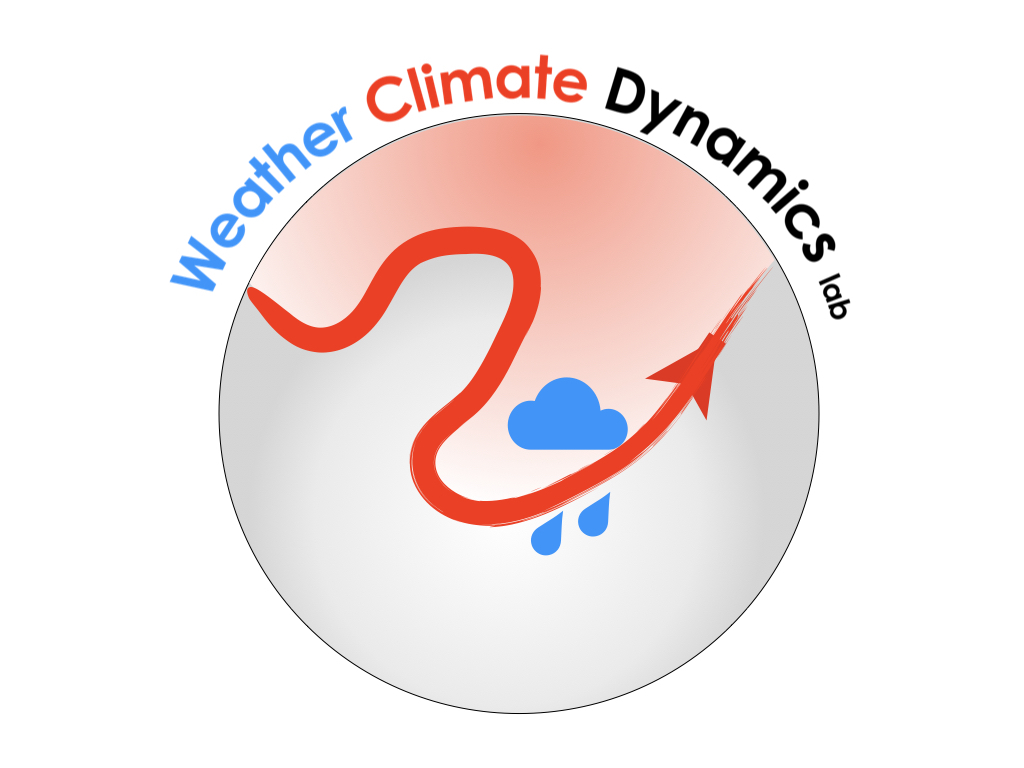Moist Incorporation
Contents
Moist Incorporation#
Dry system#
Before getting into the moist dynamics in a quasi-geostrophic(QG) system, is important to clarify the dry dynamics. The Dry two layer QG departs from the two following equations:
The above set of equations represent two layers of fluid that have a layer depth represented by \(H_i\) where \(i=1,2\), and a mean flow \(U\). Both layers are characterize by different potential temperatures (\(\theta _i\)), which represents that each layer is independent from the other. The bottom layer (\(q_2\)) is the one that acounts for the Ekman dissipation, which is responsible for the bottom drag that dissipates large scale energy. Also both layers account for small scale dissipation (\(ssd\)) which is in charge of absorbing enstrophy that cascades torwards small scales. Both layers are divided by an interface \(\eta\) which behaves as following:
The equations (20) and (21) can be rewritten in terms of the barotropic potential vorticity and the baroclinic potential vorticity as following:
where the gestrophic dynamics can be decompose into the Barotropic and baroclinic stream function as \(\psi_B = (\psi_1 + \psi_2)/2\) and \(\psi_b = (\psi_1 - \psi_2)/2\). With this in mind the relative vorticities can be express as \(\zeta_B = \nabla ^2 \psi _B\) and \(\zeta_b = \nabla ^2 \psi _b\). At the same time the Barotropic and baroclinic modes can be express as \(q_B = \zeta_B - \beta y\) and \(q_b = \zeta_b - f_0 \frac{\eta}{H}\). The previous expressions are the basis for the eqautions (23) and (24), it is important to denote that both layers are advect it by the barotropic flow, which is represented as \(\frac{D_B}{Dt}= -J(.,.)\)
Moist Incorporation#
When it comes to incoporating the moisture, the model requires to account for the effect of latent heat, which is included in the term \(S\), the diabatic forcing. In the model the moist content is reserve to be in the botton layer, inthis case \(q_b\), and this can be express as budget with the following expression:
The above equation relates the moist content as a balance between the evaporation rate and the precipitation. Where the ecaporation can be seen as the injection of water in the layer and the precipitation as the release. The \(W\) accounts for the vertical motion, which is incharge of the deformation of the interface and the mass transport between layers. The precipitatation takes part when the moist content (\(m\)) exceeds the moist saturation (\(m_s\)). When this happens the system is set to precipitate in order to relax the moist content in the layer. The saturation value can be express as:
The above equations serves as a threshold value, and let us define the precipitation, which has a simple mechanism, if the moist content is larger than the saturation, the water is going to condense releasing latent heat. After this the moist content will remain in the saturation value (\(m_s\)). This can be express as following:
With this, the diabatic forcing term transform in the following equation:
The above expression is the incorporation of the latent heat into the diabatic forcing term.
Moist potential vorticity#
The inclusion of latent heat into the system generates a disruption in the conservation of baroclinic potential vorticity. This generates a new scheme to represent this quantity. When it comes to potential vorticity, the potential part can be seen as a reservoir of vorticity. In the dry case the vertical motions draw from a reservoir of thicknes anomalies, that becomes baroclinic vorticity \(\zeta _b\) In the moist case the thickness that works as the reservoir, is compose from both the vertical motion and the presence of moisture. With this in mind, the moist baroclinic potential vorticity comes from the moisture fields in addition to thickness perturbation, and also from the impacts of the vertical velocity. This leads to an effective thickness \(\eta + lm\). This leads to an expression for the moist baroclinic potential vorticity of the form:
The above equation leads to the following equation that represents the evolution of the moist baroclinic vorticity:
